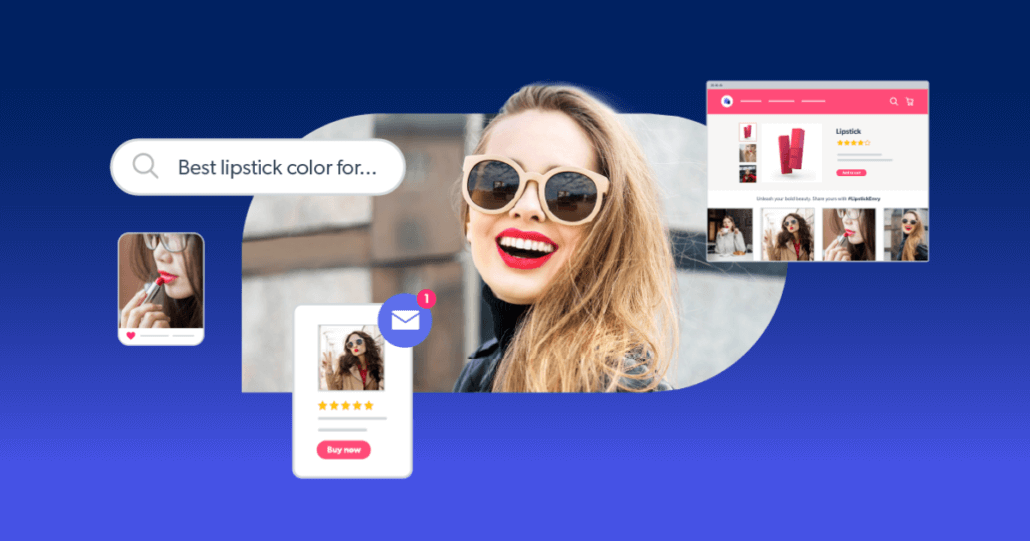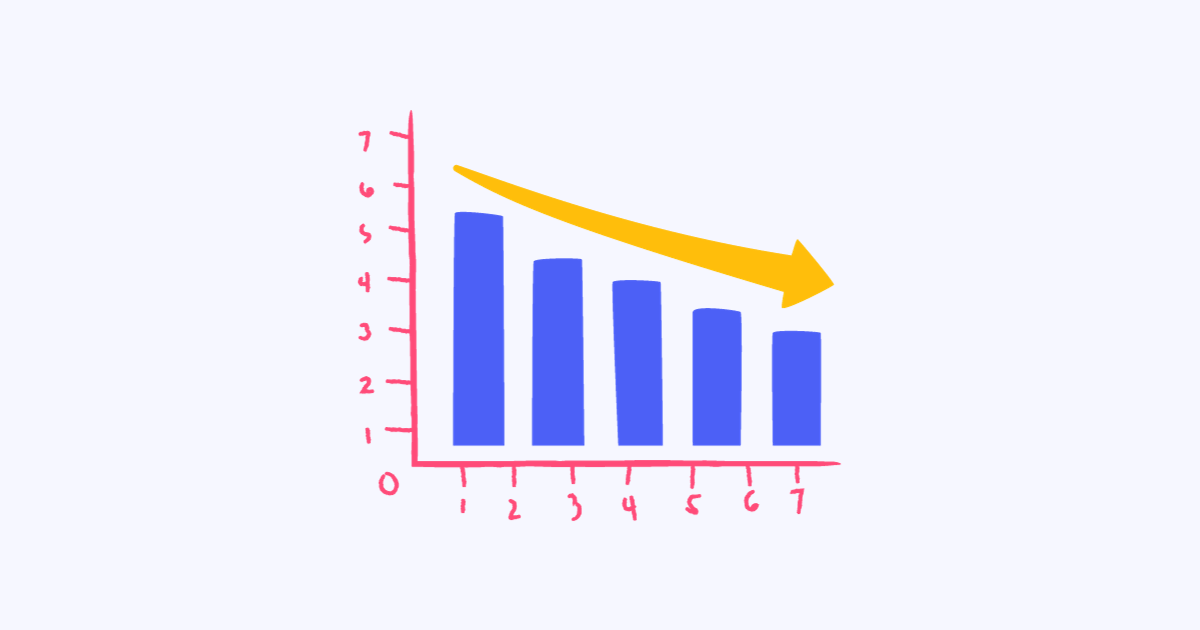January 5, 2024
Brand growth results from more customers buying your products. Unfortunately, customers don’t magically just buy your goods. Brands must pay a price to convert customers, also known as customer acquisition cost.
But customer acquisition cost isn’t just about direct conversion. It encompasses the total cost to ensure that each stop along the customer’s purchasing journey produces the highest conversion rate possible.
Chapters:
- What is customer acquisition cost?
- How to calculate customer acquisition cost
- The key to lowering your customer acquisition costs
- Putting customer acquisition cost on the chopping block
What is customer acquisition cost?
Customer acquisition cost is the total amount brands pay to obtain new customers and attract a larger audience.
While every brand has varying customer purchasing paths and uses different acquisition strategies, expenses generally include advertising, salaries for marketers, commissions, sales overhead costs, and more.
For example, art and entertainment e-commerce brands with less than four employees have an average customer acquisition cost of $21, while electronic e-commerce brands have an average of $377, according to Shopify. As a result, acquiring new customers is an inevitable and often painful expense for e-commerce brands.
Looking for more efficient marketing strategies is the one of best ways to get the biggest band for your buck.
How to calculate customer acquisition cost
Calculating customer acquisition cost uses a standard formula. Divide the total cost of acquiring customers (cost of sales and marketing) over a chosen time period by the total number of customers acquired during that time
The formula for calculating customer acquisition cost is:
Customer acquisition cost = (total cost of sales and marketing) / (# of customers acquired)
Make sure to include every sales and marketing expense used (think salaries, ad spend, marketing tools) to acquire new customers and the exact number of new customers acquired. Let’s say your expenses totaled $44,000 and you acquired 1,000 new customers, your customer acquisition cost would be:
Customer acquisition cost = 44,000 / 1,000 = $44
The key to lowering your customer acquisition costs
To make every dollar count, you must identify solutions for lowering your customer acquisition costs.
Want the key to doing so? User-generated content — content such as videos, photos, and reviews created by unpaid contributors rather than a brand. If implemented correctly, your brand will see a significant return on investment. In other words, by using UGC, you’ll let your brand enthusiasts do the heavy lifting for you.
You trust the opinions of your friends and family members. So, if you’re like most consumers, your network influences your purchasing decisions more than an ad you see on social media. In fact, 85% of consumers say UGC more influences them than brand content itself.
Brands that implement a UGC strategy see a 29% increase in conversion. Take Tuckernuck, for example. The US clothing giant saw conversions skyrocket 190% after implementing a gallery of UGC on its website and displaying influencer photos on its product pages.
UGC is undeniably powerful. But, to make it worthwhile for your brand, you must efficiently find and source content to use for your acquisition efforts.
Ways to source UGC
Sourcing UGC doesn’t have to cost you a single penny. So where do you source UGC? Here’s some initiatives you can use to start driving more purchasing decisions with UGC.
Offer incentives
Consumers love to share their opinion. But sometimes they need a little persuasion. You can easily incentivize customer reviews by offering your shoppers a small reward in exchange for an honest review. The same goes for visual UGC too.
Global luggage brand Samsonite incentivized UGC submissions with a giveaway of $2,500 worth of Samsonite goodies. Using the #takewhatsyours hashtag, they encouraged followers to submit their best OOO replies for a chance to win the prize.
The campaign generated 27,000 submissions, which helped the brand achieve a 254% increase in revenue.
But your contests don’t always need to offer a material prize tied to it! 60% of consumers prefer to share UGC simply to have their content shared by a large brand.
Ask for it
Spoiler alert: You can literally just ask your customers for UGC. Try a simple customer satisfaction survey, which will not only provide you with valuable UGC but also aid you in improving products going forward.
Or the easiest way to ask for UGC, especially written reviews, is with a review request email. These automated emails enable you to easily solicit feedback from consumers and display it across your channels. Our own research shows that they can lead to a 4-9x increase in review content.
Using customer reviews is extremely useful for lowering your customer acquisition cost, as you don’t need to spend (as much) to win over customers. 88% of shoppers already use reviews to discover and evaluate products, you just need to make sure you have the quantity and quality that consumers want.
When you do ask for reviews, be clear and concise about what you want. 53% of customers want brands to provide clear and concise guidelines for the type of content they desire, yet only 16% of brands do so, according to our research.
Engage with your community
Building solid relationships with your brand communities doesn’t just happen out of thin air. It takes some effort to engage with your audience. To do so, reply to comments with personalized notes or create some fun banter, so they gain a sense of authenticity and connection.
Engaging with your audience is purely to build relationships. This way, your followers will be more likely to offer up UGC in the future.
Identify other ways to gather UGC
Hashtags and brand-associated tags are great ways to quickly identify and source UGC. However, they’re not only solutions for sourcing UGC. Luckily there’s plenty of other ways to do so, like:
- Reading product reviews
- Editing event photos
- Discovering YouTube mentions
- Looking at tagged locations if you have a brick-and-mortar
- Browsing Pinterest, Twitter, Tik Tok and other social sites
- Using Google Analytics
How to distribute UGC
Distributing UGC on social media platforms may seem like the most obvious choice, but there’s countless cost-effective ways to implement your UGC. Plus, repurposing UGC will help you lower your customer acquisition cost.
Take a moment to identify all of the channels you can use UGC on. Then, pepper a little UGC everywhere you can think of. Here’s a few examples to get you started.
Carousels and galleries
Highlighting customizable UGC photo carousels and galleries inspire shoppers to discover products and shop simultaneously. Brands using this type of imagery see a 141% conversion lift and 15% value increase on purchases when shoppers engage with this type of content on their website, according to our research.
Your brand can quickly build customizable carousels and galleries from user-generated content.
On product pages
Your product pages are the last thing your customers see before making their purchasing decision. Using UGC on your product pages enhances the buyer’s experience and assists them in making more product discoveries.
Say your site has a question & answer feature. Pinpoint the most frequently asked questions. This way, you can create a Q&A section on each product page that answers consumers’ most plaguing questions, essentially reading your consumer’s minds and aiding them in the purchasing journey.
As the questions change, you can alter this section of the product page to ensure it’s updated to your customers’ liking and provides more relevant content.
To take your Q&A to the next level, Bazaarvoice’s Insights & Reports product suite can aid you in identifying common themes without all of the manual labor required for these efforts.
Ads
Adding UGC to your Google ad campaigns keeps your brand relevant, relatable, and current. When we spend months and months developing ad campaigns, they could quickly expire and not ensure the happenings within the market. After all, trends change course fast, so UGC can help you keep a pulse on the industry landscape and not waste precious ad spend on outdated content.
But, always make sure to ask permission before using any UGC in an ad campaign.
Emails
Consumers crave visual content at every turn. Displaying UGC on email campaigns helps engage subscribers and showcase your products as authentic and unique. After all, shoppers would rather see real people using your products than a model that they can relate to.
For example, fashion retailer Monsoon started displaying UGC in its email campaigns, which resulted in a 4% increase in revenue and a 14% increase in click-through rate.
For folks just getting started curating UGC, it’s also wise to learn the best practices for creating and curating your UGC campaigns. This way, you can avoid the mistakes of brands who paved the way for you.
Putting customer acquisition cost on the chopping block
Your customers are already creating and sharing content on social media. They’re expressing their thoughts and opinions about your products within their communities, whether that’s friends, family, social media, or wherever.
So why not use this content to your advantage to not only create stronger relationships with your customers and audience but to lower your customer acquisition cost. After all, 75% of shoppers are already making purchasing decisions from products they’ve seen on social media. Your products should be some of them.








